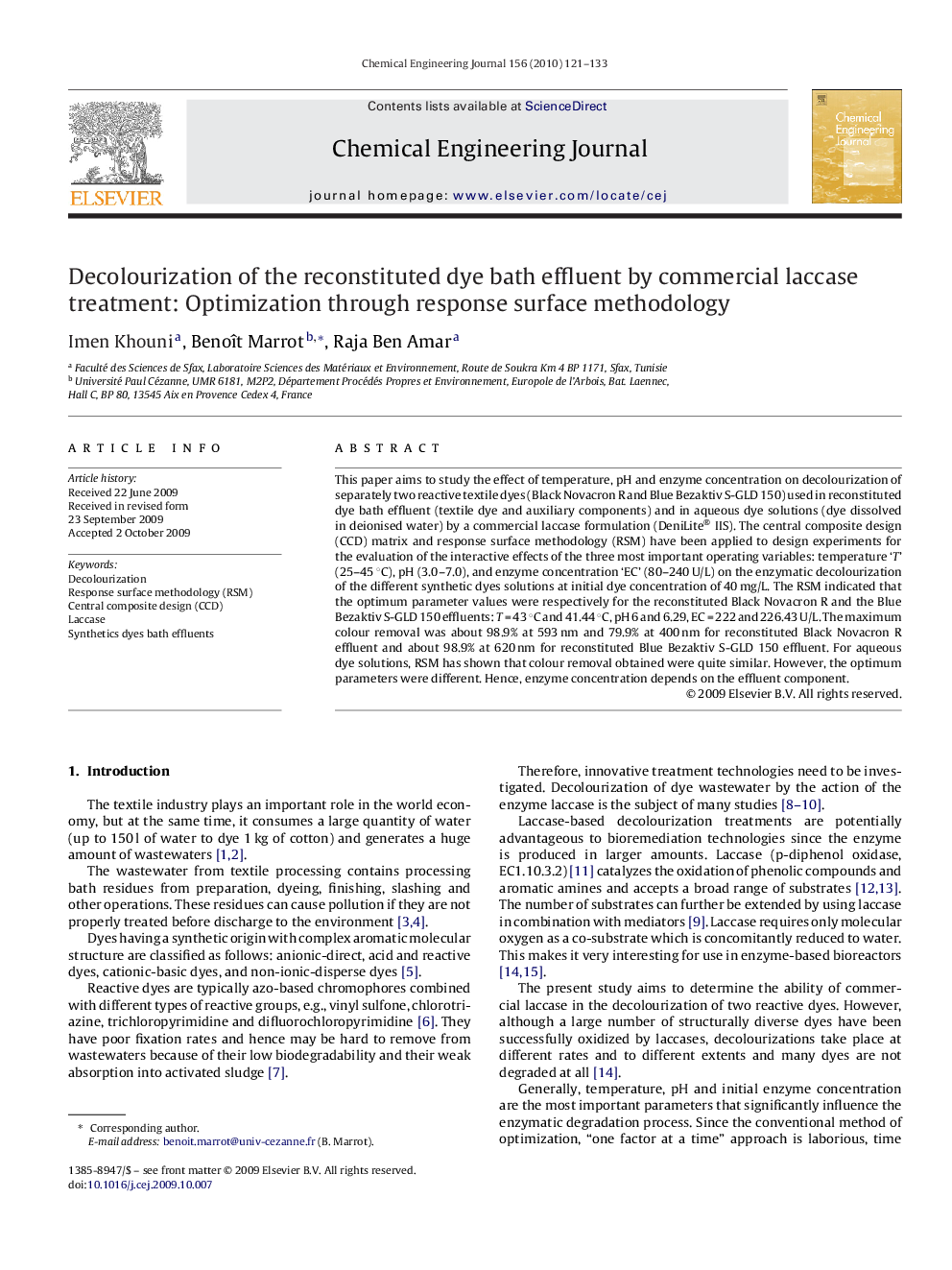| Article ID | Journal | Published Year | Pages | File Type |
|---|---|---|---|---|
| 153167 | Chemical Engineering Journal | 2010 | 13 Pages |
This paper aims to study the effect of temperature, pH and enzyme concentration on decolourization of separately two reactive textile dyes (Black Novacron R and Blue Bezaktiv S-GLD 150) used in reconstituted dye bath effluent (textile dye and auxiliary components) and in aqueous dye solutions (dye dissolved in deionised water) by a commercial laccase formulation (DeniLite® IIS). The central composite design (CCD) matrix and response surface methodology (RSM) have been applied to design experiments for the evaluation of the interactive effects of the three most important operating variables: temperature ‘T’ (25–45 °C), pH (3.0–7.0), and enzyme concentration ‘EC’ (80–240 U/L) on the enzymatic decolourization of the different synthetic dyes solutions at initial dye concentration of 40 mg/L. The RSM indicated that the optimum parameter values were respectively for the reconstituted Black Novacron R and the Blue Bezaktiv S-GLD 150 effluents: T = 43 °C and 41.44 °C, pH 6 and 6.29, EC = 222 and 226.43 U/L. The maximum colour removal was about 98.9% at 593 nm and 79.9% at 400 nm for reconstituted Black Novacron R effluent and about 98.9% at 620 nm for reconstituted Blue Bezaktiv S-GLD 150 effluent. For aqueous dye solutions, RSM has shown that colour removal obtained were quite similar. However, the optimum parameters were different. Hence, enzyme concentration depends on the effluent component.
